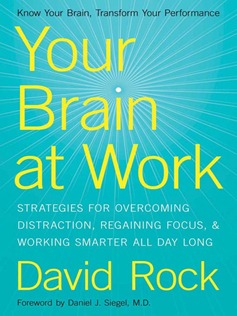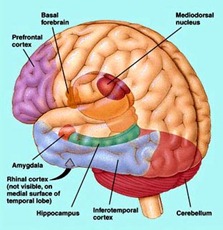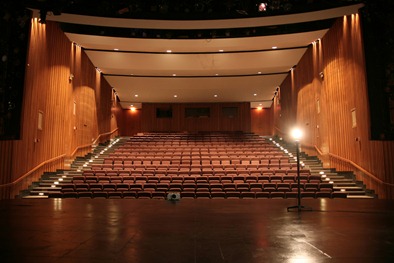Your Brain at Work : Summary

Was recovering from a brief illness. Tried reading this book just to recover from my drowsy and sullen mood.
I found the first part of this book interesting. Given the amount of information overload it often helps us to understand how our brain functions. “How do we use our brains for understanding, deciding, recalling, memorizing and inhibiting information ?” is an important question that we all need to answer, to function efficiently in our lives. I loved the initial part of the book because it uses the metaphor of stage and audience to explain the scientific aspects of our brain, more specifically the prefrontal cortex. Also the book is organized in such a way that it is presented as a play with various scenes(like a theater play). Each scene has two takes, first take is one where the actor has no clue on how the brain works and messes it up, and the second take is where the actor performs in full cognizance of the workings of the brain.
Firstly , about the stage-audience metaphor for prefrontal cortex
 [
[
The prefrontal cortex that comprises 5 to 10 % of the brain is responsible for some of the most important tasks that we do in our daily lives. Best things do indeed come in small packages!. The author uses the metaphor of the stage to explain the various functionalities of the prefrontal cortex
-
Understanding : Bringing new actors on the stage and see how they connect to the audience
-
Deciding: To Put actors(external or from the audience) on the stage and compare them to one another
-
Recall: Bring members from the audience on to the stage , the audience from the front seats representing short term memory and back seats representing long term memory.
-
Memorize: Moving the actors from the stage and make them sit as audience, be it in the front row or the back row
-
Inhibition: Not allowing some actors to get on to the stage
Also, the lights on the stage keep dimming as time passes. The only way to bring back the brightness is to energize yourself with constant breaks, exercise , pursuing various activities , i.e mixing it up. Any prioritizing activity takes up a lot of energy and hence you need to do such a task at the very beginning of the day when you are lights are bright on the stage, i.e your energy levels are high.
Since the stage is very small, one must be careful to organize the stage in such a way that the act is pleasant to watch by the audience. Bringing too many actors on the stage is NO-NO. Simplifying the stage, the number of actors, chunking the scene in the specific sequences are some of the actions one can take, to reconcile with the limited stage space. Also it so happens that the audience in the front row always want to come on to the stage and they need not be the most useful actors for the specific act (example, for critical decisions, the things in the immediate memory are not always important. Sometimes actors who are sitting way back in the audience might be extremely important)
Also just as a theater act, only one actor is allowed to speak at a time. You can put how many actors you want on the stage,obviously the lesser the better. When the scene starts, only one actor can act. This is the basic limitation of prefrontal cortex. Not only is the stage limited (the number of items that you can have on it limited) but also, what you the actors can do is also limited. This essentially means that single tasking is usually the best way to go. Whenever more than one task is done, accuracy drops. If you reply to emails + talk to someone + be on a conference call+ decide the venue for the dinner, all at once, then all the tasks will suffer to some extent or the other.
The book describes an interesting experiment that shows that developing a language for an activity enables us to catch yourself before doing that specific activity. This means if we have the language to describe the feeling of having too much on stage at once, we will be more likely to notice it. So, by giving explicit language, metaphors, analogies, terms for various functions of brain that are known implicitly to many, this book aims to help us stage the entire play (our lives) in a better way.
Talking of distractions and how they kill our ability to job efficiently, the book says that recognizing the distraction and vetoing it is very important. This requires cutting down distractions at the very source. Meaning it is better to work with mobile phone switched off than working with a visible missed call, working with email program closed is better than email box open with unread mail populating,etc. Simple actions can cause quite a bit of improvement in the way we can manage distractions. More importantly, the fact that we have a language to talk about and take cognizance of these distractions, help us to veto them.
Part I of the book ends with the author talking about ways to get over impasse. He quotes experiments forms scientific literature that says that breakthroughs, insights often come from shutting off the stage completely,i.e., instead of living in limited stage space of prefrontal cortex amongst the audience and external actors, it is better to shut off the stage completely and explore completely different paths.
The book then introduces the “Director” of the play, i.e. ‘Mindfulness’. If the stage is a metaphor for narrative circuit in our brains, director is a metaphor for experiencing circuit. The director can observe the play, the actors, scenes etc. and has the power to control them. Sometimes most of us only operate only with our default network, i.e the stage where actors seem to be dropping by with out any control. We are never directly experiencing anything completely. Even if we are reading a good book/ watching a movie / seeing a play/ sitting on a beach, our thoughts are far away from the stuff that we are experiencing. This is mainly because our director is missing and the stage is out of control.
Part II of the book is about emotional functions in the brain. Called the Limbic System, this is the seat of emotions that help us take millions of little decisions in our daily lives. In fact that is what makes us human. The downside is that when there is an over-arousal, we tend to under perform.This causes scenes on the stage to go haywire. Unnecessary actors get on to the stage, Director goes missing , wrong dialogs are uttered by the actors etc. The content in this part of the book says that you can get out of this over-arousal tendency by either labeling an emotion or reappraisal of the emotion. Both are easier said than done but by constant practice , you can see to it that director and stage is intact whenever there is amygdala hijack. Another way to save from emotional hijack is altering your perception about the event.
The last 2 parts of the book talk about things that crop up in social interactions and change management areas..More MBA style content in the last 2 parts and hence it was, needless to say, damn boring.
 Takeaway :
Takeaway :
By presenting “stage” as metaphor for brain’s “prefrontal cortex” and “director” as a metaphor for “mindfulness”, the book is pretty engaging for the first 100 pages. The rest is crap!